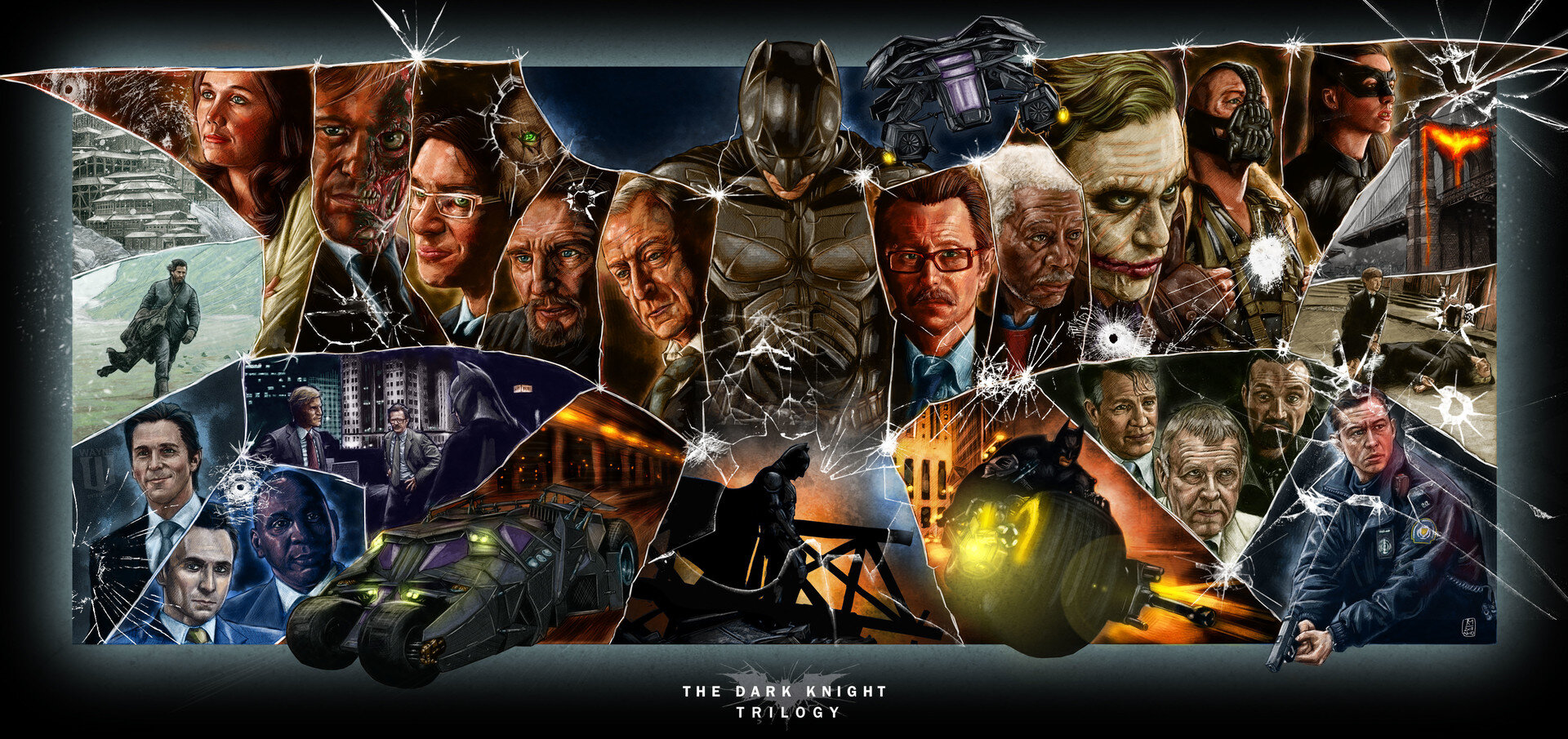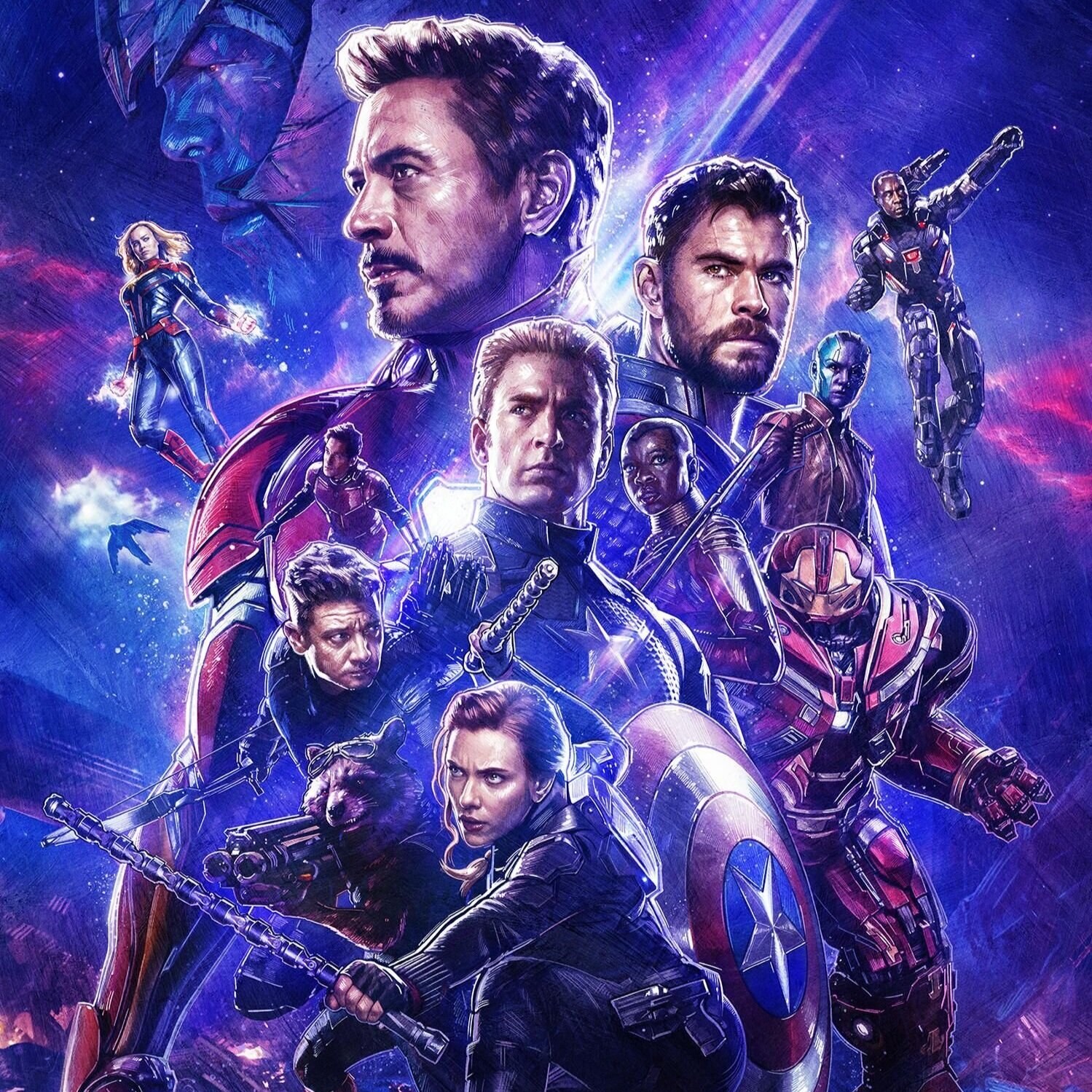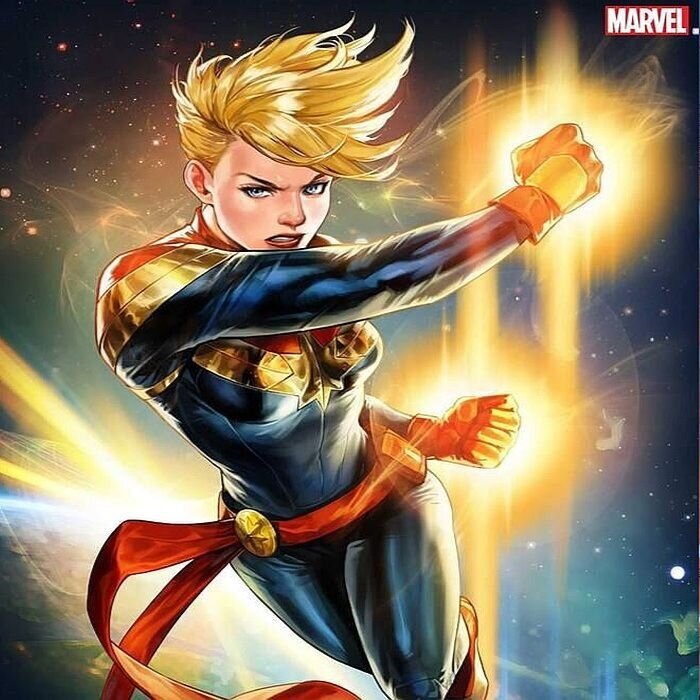Guest Article: Why The Dark Knight Trilogy Still Holds Up
Penn Sophomore Eren Ozer is not a member of the Moviegoer, but wanted to publish his amazing article on the site. Check out his other superhero-related article here.
Christopher Nolan's The Dark Knight trilogy is undeniably one of the most influential and successful film franchises in motion picture history. Grossing over $2 billion worldwide, meriting critical acclaim and earning nominations for countless awards, Nolan's rendition of the caped crusader has become deeply ingrained in the fabric of contemporary culture. With Nolan's Batman franchise becoming increasingly prominent, critics and fans alike have already begun scrutinizing the Trilogy, trying to pinpoint the specific elements within the films that set Nolan's portrayal of Batman apart from those that came before it.
However, parsing the nuanced layers of Nolan's The Dark Knight franchise is no easy feat. In creating a new Batman narrative that is intended to cast a spotlight on the more realistic aspects of the Caped Crusader, Christopher Nolan characteristically injected into his vision elements from fields ranging from psychoanalysis to political theory. The resulting concoction has beckoned the expertise of those in fields ranging from cultural theory to psychology to delicately peel the artistic layers of the film franchise and offer conjectures that aim to elucidate what makes Nolan's work more relevant than those of previous Batman directors, Tim Burton and Joel Schumacher.
After approximately ten years of intense debate, significant progress has been made. Works of notable experts, like Alex Wainer, have cast an illuminating spotlight on the impact of broader underlying themes, such as post-9/11 fears, while others have identified intriguing parallels between Nolan's works and the previous successful renditions of the Caped Crusader. Though there is still a lot of research yet to be done, critics and experts agree that The Dark Knight franchise's greatest success can be found in Nolan's implementation of Batman's source material, specifically from the 1940s, into the cultural trends of the 21st century.
Realism and Authenticity
One of the most noticeable differences between The Dark Knight franchise and the Batman films that preceded it is their difference in tone, with Nolan's vision for the narrative of the Caped Crusader being a more "depressive and retrospective" journey compared to its predecessors (Fisher 1). As a result, one of the main pillars of the current discourse on the popularity of The Dark Knight trilogy is a focus on the cultural undertones of Nolan's work. As an expert in the field of analyzing the effects of neoliberal capitalism on contemporary culture, Mark Fisher was the scholar who initiated the dialogue on cultural undertones within The Dark Knight franchise. In his work "Gothic Oedipus: Subjectivity and Capitalism in Christopher Nolan's Batman Begins," Fisher proposes the theory that the dark nature of Nolan's Batman narrative is a manifestation of the notion of "Capitalist Realism," which came into the foreground of cultural discourse during the 1980s (2). Fisher argues that the prominence of The Dark Knight trilogy in contemporary culture is a byproduct of society's internalizing and fascination with the notion of the "restricted sense of possibility" (2). In the same way "capitalism and liberal democracy are 'ideal' precisely in the sense that they are 'the best that once can expect,'" Batman is essential to the survival of Gotham City because "in a world of endemic corruption, he is the least worst" (3). By portraying a society marked by darkness and restricted possibility, the viewer is drawn to the narrative of The Dark Knight due to an adolescent desire to both have comics and to feel superior to them.
Fidelity to Source Material
Despite engendering illuminating propositions, discourse on the impact of cultural undertones in the popularity of The Dark Knight franchise still had its limitations. For starters, research thus far failed to address the discrepancy posed by the fact that Batman source material from the 1940s was also largely popular despite being devoid of dark undertones. Hence by early 2010s, research on the subject of the popularity of The Dark Knight franchise shifted towards the subject of Nolan's fidelity to Batman source material in rendering a new version of the Caped Crusader. Leading the way in this new direction of research was Alex Wainer, Stijn Joye and Tanneke Van de Walle.
Taking an alternative stance to Mark Fisher, Alex Wainer, in his work "Dark Knight Apotheosis: Batman's Mythic Persona Adapted in Christopher Nolan's Dark Knight Trilogy," makes the claim that the primary reason behind the success of The Dark Knightfranchise is Nolan's capturing of the mythic features of the Batman persona, which made the original comics written by Bob Kane so enduring. As an academic studying the relationships between various media forms, Alex Wainer differs from other researchers by comparing Nolan's work directly to its source material, specifically those from the "Golden Age of superhero comics," which refers to the 1940s (Wainer 14). In doing so, Wainer attempts the determine the key similarities between the different narratives and attribute the success of Nolan's work to such similarities. At the conclusion of his research, Alex Wainer discovers that in direct contrast to earlier portrayals of the Caped Crusader on the big screen, Christopher Nolan expertly brings to the foreground of his films the qualities of Batman that mystified its readers in the first place: Batman's duality and physical prowess. Trained in "ninja and other exotic combat methods," knowledgeable about "the value of theatrical effects like stealth and smoke bombs" and suited with advanced "body armor, equipment and cutting-edge applications of technology," Batman in Christopher Nolan's films is visualized as a superhuman as envisioned and portrayed by Bob Kane in the 1940s (Wainer 20).
Affirming the notion of the importance of fidelity of source material, Drs. Joye and de Walle took the discourse one step further by taking the innovative approach of analyzing the depiction of the villain in the Batman narrative instead of the hero. By comparing the stark difference in the reception of fans to Joel Schumacher's Bane in Batman and Robin and Christopher Nolan's Bane in The Dark Knight Rises, they show that fans "prefer a sense of faithfulness towards the psyche and personality," in a similar fashion to findings of Alex Wainer (Joye, de-Walle 10).
Consensus Among Experts
Curious about the relationship between cultural theory and depiction of superheroes, Dan Hassler-Forest, in his book Capitalist Superheroes: Caped Crusaders in the Neoliberal Age, offers a conjecture about the reasons behind the popularity of Nolan's work that is both an amalgamation of the theories of Mark Fisher and Alex Wainer and a consensus among experts. Approaching the topic as both a specialist in analyzing the interplay between film and popular culture and a scholar of cultural theory, Hassler-Forest adds an interesting nuance to the notion of the attractiveness of restricted possibility by emphasizing the impact of contextual cultural discourse in post-9/11 society on symbolism in film, an avenue of research also pursued by Dr. Stefan Octavian Popescu in his work "The Dark Knight Rises: Christianity, Capitalism and Psychopathology." Unlike Mark Fisher, Hassler-Forest and Dr. Popescu focus their research on the narrative of The Dark Knight franchise in relation to the context of post-9/11 western culture. In doing so, Fisher and Popescu recognize a recurrent phenomenon in which the cultural assumptions and preconceptions that arose as a result of post-9/11 discourses, such as orientalist stereotypes and the inevitability of surveillance culture, being played out in a symbolic fashion in Nolan's work. They argue that another prominent reason behind The Dark Knight trilogy's popularity in contemporary society, in addition to its depiction of the notion of restricted possibility and realism, is its masterful incorporation of "the cultural assumptions and preconceptions that maintain and support the mythical narratives of neoliberal capitalism" (99).
By employing symbolism and imagery already familiar to its audience, like depicting the evil League of Shadows in an orientalist fashion that is "associated with al-Qaeda and its extremist agenda," Nolan is able to subconsciously enlarge its target audience and create a narrative relevant to the times (Hassler-Forest 94). In addition, by having Batman sacrifice "himself for the greater good and for the sins of Gotham City," Nolan establishes a parallel between the story of Jesus and that of Bruce Wayne, which effectively establishes a narrative that is easy to understand and follow for all audiences (Popescu 3). In the meantime, Hassler-Forest concurs that in making Batman also a "preternaturally effective" fighter, Christopher Nolan is able to depict a superhero that is in tune with its source material (96).
Conclusion
Four years after the epic conclusion of The Dark Knight franchise, 2016 marked the return of the caped crusader to the big screen, this time according to the vision of a new director, Zach Snyder. Though the movie Batman vs. Superman: Dawn of Justice unsurprisingly reaped huge profits, it was unquestionably a disappointment compared to the colossal success of its predecessor, The Dark Knight franchise. Because of the apparent gap between the two visions, Snyder's work brought Nolan's work once again to the epicenter of discourses on film theory. With a plethora of theories aimed at articulating the reasons behind the success of Nolan's rendition of the caped crusader up for discussion, one premise, particularly that put forward by Dan Hassler-Forest in 2012, seems to be an overarching consensus among experts and critics: to understand the success of The Dark Knight franchise one must fully understand Christopher Nolan's incorporation of the themes intrinsic to the original Batman comics to the cultural trends of the 21st century. Since more Batman films are scheduled to be released in the next decade, the discussion on the popularity of Nolan's work will likely shift to analyzing more closely the similarities and differences between The Dark Knight franchise and the Batman films scheduled to be released in the near future. The parallels between the two versions of the Batman narrative can lead to new discoveries about the popularity of The Dark Knight franchise just as Mark Fisher's work has done with the comics.
Works Cited
Fisher, Mark. "Gothic Oedipus: subjectivity and Capitalism in Christopher Nolan's Batman Begins." ImageTexT: Interdisciplinary Comics Studies. 2.2 (2006). Dept of English, University of Florida. 14 Sep 2016. http://www.english.ufl.edu/imagetext/archives/v2_2/fisher/.
Hassler-Forest, Dan. Capitalist Superheroes: Caped Crusaders in the Neoliberal Age.Winchester, UK: Zero, 2012. Print.
Joye, Stijn, and Tanneke Van de Walle. "Batman Returns, Again And Again: An Exploratory Enquiry Into The Recent 'Batman' Film Franchise, Artistic Imitation And Fan Appreciation." Catalan Journal Of Communication & Cultural Studies 7.1 (2015): 37-50. Communication Source. Web. 19 Oct. 2016.
Popescu, S. O. (2016), 'The Dark Knight Rises: Christianity, capitalism and psychopathology', Australasian Journal of Popular Culture, 5: 1, pp. 49-57, doi: 10.1386/ajpc.5.1.49_1 Wainer, Alex. "Dark Knight Apotheosis: Batman's Mythic Persona Adapted in Christopher Nolan's Dark Knight Trilogy."




























